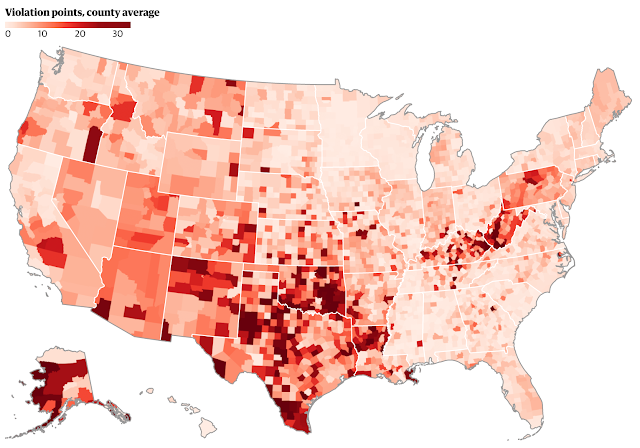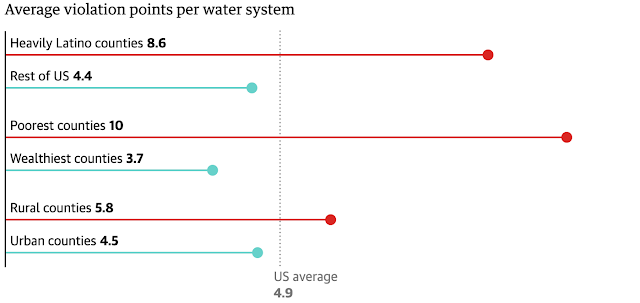The pandemic exacerbated financial problems for local newsrooms across the U.S., resulting in thousands of layoffs and more than 70 newsroom closures. Two journalism professors set out to document the impact on small community newsrooms in seven states and show how local journalists are truly "essential workers," Kristen Hare
reports for the
Poynter Institute, host of the project.
Teri Finneman of the University of Kansas and William Mari of Louisiana State University "got funding to capture the moment from state newspaper associations in North Dakota, South Dakota, Nebraska, Kansas and Arkansas, and from their own universities." The idea "was to capture history as it was happening and to grab memories while they were fresh of journalists surviving a pandemic of global proportions for the first time in a century," Mari told Hare.
Finneman and Mari documented the big changes spurred by the pandemic. Many newsrooms "hit an inflection point with their digital presence that they hadn’t before," Hare reports. "Weeklies became dailies, at least online and through social media. And journalists that dismissed the internet saw how powerful it was for them and their communities."
Many of the newsrooms are rural, and are playing all-the-more vital roles in their communities. "These weekly rural community newspapers have just been a significant lifeline for people during this pandemic," Finneman told Hare, "and I don’t think that can be overstated." Here are a few tidbits:
Amy Wobbema, owner and publisher of the New Rockford Transcript, a 1,000-circulation weekly in North Dakota, said there was so much pandemic news to report that she found her paper operating more like a daily, and sometimes saw a 600% increase in web traffic. "It seemed like whenever there was a breaking story that was Covid-19 related, it always happened right after the newspaper went to press," Wobbema said. "We were starting to write articles immediately after and post them on our website to keep the community informed in real time."
Cecile Wehrman, publisher of the
Crosby Journal and
Tioga Tribune, two weeklies in northwestern North Dakota, likewise saw huge online traffic spikes. Their staff of six worked tirelessly while trying to find creative ways to keep the paper funded and afloat. "It just seems in my mind like one really long day, and I look at all those stories and I just go, 'Wow. How did we do all of this?' But that’s what we’re here for," Wehrman said. "This type of historic coverage gives us the opportunity to be the best that we can be and to show why newspapers are so important."
The weekly Freeman Courier in South Dakota has been in editor and publisher Jeremy Waltner's family for over 35 years. He's the only reporter in his community of 1,300 and has juggled the influx of pandemic news and decline in ad revenue with supervising his children doing remote learning at home. A few months in, he was worried the paper would have to shutter, but said the local business community rallied to support it and he's determined to keep it going. He said he wants readers to know that "we’re in it for the long haul, that we’re in it for the good fight, that we’re going to continue to be there for you . . . Don’t know exactly what that format is going to look like. It might be different than what you’re used to, but we’re not going anywhere, and I’m not going anywhere."
Letti Lister, president and publisher of the Black Hills Pioneer in Spearfish, S.D., provided gloves and sanitizer to employees, including paper carriers, to make them feel safer. She said being locally owned helped her make decisions quickly without being bogged down by bureaucracy. She increased subscription prices in June to make up for a 40% drop in ad revenue, but refused to cut publication days as many papers have. "I do not want to break the daily habit of our readers,” she said. “I want them to keep getting that paper every single day so that they form that habit and they want it. And the news is moving so fast and furious we have to keep doing that in order to get everything out there that everybody needs to have access to."
Alaina Beautiful Bald Eagle, the managing editor of the West River Eagle on the Cheyenne River Sioux Reservation in South Dakota, has a circulation of 1,700 and is the primary news provider for an area the size of Connecticut. In June, she often got only four to six hours of sleep a night as web traffic jumped from 5,000 visitors a month to 250,000. "The decisions that (tribal officials) were making that were having real-time impacts on the lives of our people here — getting that out was so important to me and, quite frankly, there’s nobody else to do it," she said.
Bill Blauvelt is editor of three rural Nebraska papers: the Superior Express, the Jewell County Record, and the Nuckolls County Locomotive-Gazette. Because there are few retail businesses in the area, the papers rely on commercial printing and advertising from social events and special sections. Blauvelt combined the Record and the Express into one publication early in the pandemic to save money. Poor postal delivery has been a huge source of stress for Blauvelt: "The post office has delayed our deliveries so bad, and they’re talking about doing it some more. . . . They’re driving business away by slowing the delivery of the mail, and I attribute much of our circulation loss to the post office."
Amy Johnson, editor of the Springview Herald and president of the Nebraska Press Association, said the pandemic obliged the staff to shift more to posting on social media. She also said the pandemic illustrates the importance of rural journalism. "There is so much information online," Johnson said. "Our community newspaper is directed to them in this local area, and I think that’s one of the biggest things that I’ve noticed — the comments from people that they’re looking to the newspaper for current regulations and changes in the Covid landscape."
Cynthia Haynes and her husband Steve own seven small papers and a shopper in northwest Kansas. Early in the pandemic, she bought the Rawlins County Square Deal to keep it from closing. Her staff grew closer since they began having meetings on Zoom. "We had almost quit having meetings of the whole staff simply because we’re spread across six counties, and it’s really difficult, you know, it’s a two-hour drive from one end to the other" Haynes said. "So we have learned to use Zoom, and we’re having more regular meetings now, and I think it’s helping all of us to talk to each other, bounce ideas off of each other, know what’s happening, know what we should be doing. So that’s helped us a lot."
Consolidation of papers seems to have accelerated. Carrie Pitzer, owner and publisher of Pitzer Digital in rural Nebraska, took on a nearby weekly, the Stanton Register, during the pandemic so it didn't have to close, and it had a revenue base: public-notice ads, as the county's only paper. "Where would those legal notices go, you know? How would the subscribers receive information on meeting notices, meeting minutes, budgets, bonds, things like that?"
Jill Friesz, who oversees four rural papers serving 2,000 households in western North Dakota, made up for lost revenue by walking 10 miles to deliver copies to the 44 subscribers who lived at lake cabins and offere a summer subscription. "This lake has been here for all of the time I’ve been here, but I have never gone up there and just put the work into it," Friesz said. "And maybe it’s just time that we start looking at things differently and do things differently and change the way we can serve our readers."
Joey Young and his staff of 30 at
Kansas Publishing Ventures run community papers in the south-central part of the state. Sales dropped by about 40% and online traffic went up so much early in the pandemic that they had to buy more bandwidth to keep the sites from crashing. To save money, they consolidated some of their papers into a weekly called the
Harvey County Now and found that readers liked it. Subscriptions went up and the company got a Paycheck Protection Program forgivable loan, but Young says the pandemic has taken a big toll on him. "You know, when you’re trying to build a company, it feels like your personal life is the company," Harvey said. "So, I’m just super stressed out about the company all the time."
Read more here.







